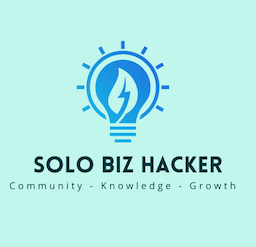Are you ready to hang out your shingle as an online business owner?
One of the first things you need to put in place is a mechanism for selling your service or product. Here’s a “shopping list” of what you need to get started (or to uplevel).
Your Sales Funnel
Entire books have been written about sales funnels, but here’s how a funnel traditionally works:
Your sales funnel begins with your free offers—your blog, social media updates, YouTube videos, etc. These are the things that anyone online can access at zero cost and will help people find you, get to know you.
Following that, are your free items that require an opt-in. The cost of access isn’t money, but rather an email address. These include checklists, worksheets, video training, small reports, resource guides, etc.
Below that in your funnel are low-cost items. Depending on your market, low cost might be $7 or it might be $70. Only you can determine what your “entry-level” rate is.
Next are your mid-range products, followed by those top-end, elite coaching offers, or for products, it is what Ryan Deiss calls the Profit Maximizer – eg. the $800 coffee maker sold in Starbucks.

Ideally, your sales funnel will work in conjunction with your social media, your blog, and your email autoresponders to move people from the entry level to the top products over a period of time. If you find that people opt-in for your free offer, buy your low-cost items, but don’t purchase your higher-end products consistently, you have what’s called a leaky funnel. It simply means that buyers are “escaping” your funnel at some point. Identify where your trouble spots are, and you’ll be closer to your earning potential.
One of the biggest mistakes I see people make with sales funnels is overthinking the funnel. When your list is small there just aren’t enough people in the funnel to justify something really complicated.
When you are just starting out, you can start with a simple funnel – that looks a bit like this
Awareness (Traffic) -> Freebie (simple lead magnet or video) -> Phone Call -> Service.
It is much easier to get one or two people to buy a service at a higher price than to sell 100 ebooks to a list of 50 people. Keep your funnel as simple as possible for as long as you can.
Your Turn: Take a minute to draw out your funnel – what do you still need to put in place to have it working for you automatically?
Upsells and Downsells – What else you got?
When a visitor lands in your cart, your relationship with her has reached a new level. If she buys, you’re in the perfect position to offer more in terms of an upsell, cross-sell, or one-time-offer.
You’ll see this in action whenever you buy from places like Amazon or Wal-Mart. Before you click the “buy” button, you’ll often see a row of items with the heading, “Customer who bought this item also bought…”

This encourages buyers to explore other, related items, and ultimately increases the average sale amount. If you have another product ready, adding an upsell or downsell is a great way to quickly add profit to each sale. A good example is when buying a camera – do you need a camera bag with that? A tripod maybe?
Our favorite shopping cart, ThriveCart has a robust system for adding upsells, downsells and even a quick “bump” offer.

But what if a customer lands in your cart and doesn’t buy? Perhaps she decided the cost was too high, or that she’s not quite ready for this product – or more likely, wants to check out the competition first. That’s the perfect opportunity to offer a downsell—a lower-priced item in the same category. Your downsell might be a “lite” version of the item she almost bought, or a self-study course rather than live training, or even an ebook instead of an on-site workshop.
The point with a downsell is to turn a “no” into a sale, even if the sale is of your lowest priced product. It’s much easier to sell to a customer than to sell to a visitor, so if your downsell converts, it’s a powerful tool.
Your Turn:
Consider all of your products, and where it makes sense, add a downsell. Then track your cart abandonment rates and see if they improve. ThriveCart also lets you easily track cart abandonment and send prospects a series of emails through Active Campaign (or your favorite autoresponder).
Collecting the Money and Delivering the Product
The cart you choose and the method of product delivery can mean the difference between making a sale and not. While a PayPal button is really all it takes to collect payment online, it might not be enough to instill confidence in your audience.
If your ideal client is older or is used to doing business offline, she might not be comfortable with just PayPal as an option. Consider upgrading to a cart that offers credit card payments as well, so she’ll feel better about security.
ThriveCart lets you easily customize your cart color scheme for that professional, confidence, inspiring shopping experience (with more template options on the way.

Product delivery is best when handled automatically – not only for you, but for your clients as well. Imagine if you make a purchase at 8pm on a Friday evening and have to wait until Monday morning for the product to be scheduled for delivery because the seller is offline for the weekend. You won’t be thrilled with the experience, and neither will your buyers, so be sure whichever cart you choose has the capability to deliver products automatically, within minutes of purchase.
Your cart should also handle refunds, coupons, bundles and other ecommerce components with ease. Sophisticated buyers have come to expect this of the merchants they buy from, and if you don’t offer such things, you’ll very likely be passed over in favor of someone who does.
Take a look at your shopping cart setup. Does it need updating? Is it still serving you and your clients well? How could you make it better?
When They Press “Buy” – The Work Begins
From the moment of purchase onward (and really, even before!) your clients and customers deserve the best support you can offer them. It begins with product delivery, which we’ve already covered, continues with follow-up and encouragement, your help desk, product updates and more.
Begin by incorporating a series of emails that encourage clients to both use the products they’ve purchased, but also participate in any groups or other live training available to them.
You can offer encouragement to your buyers whether your program runs live or is a self-study plan. Simply set up your emails in an autoresponder to go out on a regular schedule, and your clients and customers will be much more likely to not only complete your program, but to purchase others from you as well.
We email clients once they’ve purchased, but then follow up with weekly emails highlighting some of the course material. We also have an interactive membership site using Access Ally which allows customers to complete homework and get feedback from us.
Your help desk is an important part of your customer support system as well. By providing fast, courteous help, you’ll build a loyal fan base that will happily sing your praises and refer new clients to you as well.
Whether you maintain your help desk via email or with a dedicated app such as Zendesk or Help Scout, take the time to set up a FAQ page. This will help your buyers find the answers they need without you having to spend time responding to easily answered queries. For those questions that do require an answer from your team, canned responses can easily take care of 80% or more of the tickets you receive. Not only that, but you can (and should) craft your responses to gently nudge your readers more deeply into your funnel.
Those are the three main parts of the sales system. What do you need to add in order to see more sales?

